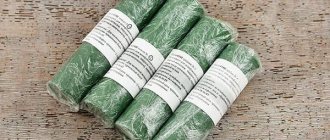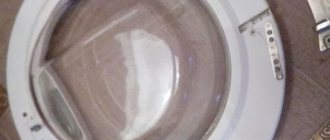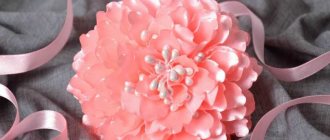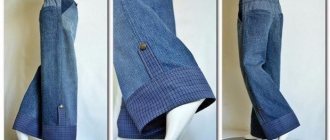The condition of the furniture deteriorates over time. Regardless of operating conditions, the finishing coating loses its strength, becomes covered with a network of small cracks, and becomes dull or cloudy.
Scratches and abrasions appear, which spoil the appearance of the furniture and make it unsuitable for use in the interior of residential or public premises. However, in most cases the condition of the surfaces can be restored, and sometimes it is possible to make the furniture more attractive than it was before.
What is polishing
Polishing is a process of finely treating a surface, giving it shine. As a rule, the varnish layer is polished, but the procedure can also be performed on the paint or the material itself. The processing technique is close to grinding, but the fineness of the abrasive in this case is an order of magnitude higher.
There are different degrees of surface gloss. There are glossy finishes that are highly shiny and reflective to surrounding objects. Furniture finished in this way looks elegant, bright, and glares when exposed to light.
Matte surfaces do not reflect light, their shine is very soft. As a rule, matte types of varnish are used for modern furniture, but ancient samples were coated with a special composition (classic shellac), or the wood was simply impregnated with oil, followed by processing with cloth swabs.
Expert opinion
Kokovin Dmitry Vasilievich
Furniture restorer
There are different polishing techniques. The basic method is to apply a special polishing paste to the prepared surface and process it using a polishing wheel made of foam rubber, felt, felt and other materials.
Is polish needed at all?
What is polish used for? The name itself suggests its purpose.
Important! Polish - give a surface a mirror appearance by rubbing.
As a rule, such products are used on varnished furniture, which is the most popular among the entire range of wooden products. Although they are also used to care for unprotected wood - to even out color and texture.
What materials can be polished?
As a rule, furniture coating is a varnish layer of one composition or another. In Soviet times, the main type of coating was polyester varnish. It was applied in a thick layer (0.5-0.8 mm), ground and polished on special production lines.
Modern furniture has a varnish coating made on the basis of the same polyester. Or other materials. there are many of them, but the general properties are approximately the same.
The most common coatings are:
- polyester;
- polyurethane;
- nitrocellulose;
- impregnation with oil of natural or synthetic origin.
Almost all varieties can be polished. The softer the varnish, the easier it is to polish, but its abrasion resistance is much lower.
Paints and varnishes that are sold in retail chains are of little use for creating high-quality furniture coatings. They do not meet standards for hardness and load resistance. For restoring furniture coverings, they are suitable only in certain cases and require proper use.
Most Beautiful
Every home has wooden furniture. This is a sign of good taste of the owner of a private cottage or apartment, and also a specific comfort, color and good quality of the environment. After reading our article, you will learn how to choose the right care products for such interior items, and you will also be able to easily make furniture polish with your own hands, so that caring for it becomes even easier, and the appearance remains unchanged. But first things first.
Methods for polishing furniture at home
Despite its apparent complexity, polishing is not a high-tech process and is quite accessible to do it yourself. Its only drawback is that it is labor intensive; the work requires care, time and effort.
Felt
Felt
The main method of polishing a new coating is to apply a polishing compound and treat the surface with felt or felt material. To obtain a mirror shine, you have to use special devices - attachments for an electric drill or grinding machines, otherwise the procedure will take too long.
Polishing technology has been known to people for a very long time. It has been improved, supplemented, and improved over thousands of years. Today, at home, you can use different techniques, which are chosen depending on the initial condition and type of coating.
Classic polishing
Ancient polishing methods differ markedly from modern ones. In practice, this is a separate technology that is rarely used today. Simultaneous application and polishing of a varnish composition or polish is carried out. This is shellac tree resin dissolved in ethyl alcohol.
The polishing process is carried out using a swab. Take a piece of clean linen cloth the size of a handkerchief. A lump of cotton wool the size of a large plum is placed inside. A little polish is poured into it, wrapped in a cloth and the surface begins to be processed in a circular motion.
The composition impregnates the tampon and fabric and is applied in small quantities to the surface. It dries immediately on it, so you need to act quickly, without stopping. If the swab is stopped in one place, the polish will dissolve the already created layer and ruin the entire work.
Expert opinion
Kokovin Dmitry Vasilievich
Furniture restorer
Classic polishing is a complex procedure that requires experience and skill. In addition, it is very difficult to get natural shellac today, so this technique is rarely used. Basically, it is used by master restorers to restore antique furniture.
Traditional methods
Folk polishing methods are quite simple, but quite effective. As a rule, they involve treating the surface with soft materials using a fine abrasive, for example:
Dentifrice
Toothpaste
Chalk
Talc
To reduce heat due to friction, oil (sunflower, linseed or synthetic) is used. It is applied to the surface or to a polishing block, which eliminates the risk of overheating and damage to the varnish layer. To simplify the process, make a mixture of abrasive (chalk, tooth powder) and oil filler (linseed, sunflower oil).
For fittings, metal parts or hard components, only abrasive can be used, without filler. It is poured onto a felt or felt block and the surface is rubbed until shiny.
Polishing pastes or compounds
In furniture production, special compounds are used to polish the surface to a mirror finish. They are rarely found on the open market, as they are supplied in large packages. It is not advisable to purchase them for household use.
However, there are effective and high-quality pastes for polishing car coatings. They are sold in small containers (1 kg, 800 g, etc.), and to treat a small area you can buy a very small amount of material.
One such composition is 3M paste, which is available in several forms:
- No. 1. Used for rough (primary) processing of surfaces after grinding. Removes small marks and abrasive marks;
- No. 2. Brings the surface to a mirror state;
- No. 3. Brings the coating to its final state and gives the surface a durable protective layer.
In addition to the basic compositions, there are intermediate ones - numbers 1.5 and 2.5. These compositions simultaneously possess the properties of lower and higher materials.
There are other polishing compounds on the market. There are hard pastes (such as GOI) that are used for polishing hard surfaces. However, most materials are made in the form of thick pastes (the consistency of sour cream or toothpaste), which are more convenient to apply and work with. They all have approximately similar qualities and allow you to effectively and quickly bring the surface to ideal condition.
Industrial polishes - are they worth buying?
Industrial polishes contain special substances that fill microcracks in the furniture surface, as a result of which the structure of the material becomes even and smooth - polished.
Today, store shelves are filled with a variety of products from different manufacturers. They, to one degree or another, make care easier, but how safe and effective they are is always up to the consumer to evaluate after purchase. This is a matter of personal choice.
Important! It is not uncommon for a manufacturer to promise water-repellent, shockproof and antistatic effects. But in the end you only get disappointment and an unpleasant aftertaste in your soul. Although, for the sake of fairness, it is worth noting that expensive means will indeed provide such a result, but cheap analogues are a game of “believe it or not.”
Furniture wax is a good alternative
You can find furniture wax on the shelves of hardware stores. This substance has been used to coat furniture for centuries. And today it ranks first in wood processing and care.
What are the advantages of using wax:
- furniture can withstand long-term loads;
- wood does not lose its texture, retaining natural warmth;
- the velvety properties of the material are preserved;
- after coating, the color of the product becomes more expressive;
- the ability to choose any tone during restoration;
- The thick consistency fits well on the surface of the wood, filling all cracks and scratches.
Flaws:
- furniture wax should be applied to clean, open-pore furniture (so that there are no paint coatings);
- a labor-intensive process when the surface is varnished (needs to be thoroughly cleaned).
Important! Furniture wax is in most cases used on freshly made furniture, or for thorough restoration of furniture products. When you need to remove a few small scratches or slightly refresh the color, it is better to use a polish with wax or silicone additives.
Wax furniture polish AMWAY™
This is the option when you can trust the manufacturer, because more than one housewife has already noted the effectiveness of this brand’s products for various purposes.
An excellent Amway polish, which has established itself as an ideal assistant for the care of wooden and lacquered furniture.
Important! The creamy aerosol spray consists of a mixture of wax and silicones. After use, the darkened wooden surface acquires its original shine and gloss, and scratches disappear.
Advantages:
- creamy structure - does not flow, does not drip;
- fresh lemon aroma - non-toxic;
- convenient aerosol can;
- easy to use.
Useful tips
Polishing is a largely creative process. However, it is better to act according to proven methods and not violate technology.
How do you polish?
ClassicFolk
It is recommended to follow some tips:
- During operation, do not apply too much force or put pressure on the machine. This may cause the coating to overheat;
- If marks or scratches are clearly visible, you should not start polishing. It is necessary to carefully prepare the surface. sometimes this is neglected, hoping that the flaws will disappear during processing. However, they will remain and will be clearly visible;
- Matte finishes do not polish. Sometimes they become covered with shiny areas, which are restored using scratch paper.
By following these simple tips, you can get high-quality coverage and avoid annoying mistakes.
Furniture polishing is a procedure that allows you to restore old products and correct errors made during operation or transportation. The polishing technology is simple, but high quality can only be achieved with skills and experience. Otherwise, the flaws in the coating will only be exacerbated. If you don’t have confidence in your abilities, it’s better to entrust the work to specialists.
Most Beautiful
Every home has wooden furniture. This is a sign of good taste of the owner of a private cottage or apartment, and also a specific comfort, color and good quality of the environment. After reading our article, you will learn how to choose the right care products for such interior items, and you will also be able to easily make furniture polish with your own hands, so that caring for it becomes even easier, and the appearance remains unchanged. But first things first.
Cleaning complex contaminants
Folk remedies also help to cope with difficult stains. In particular, to clean surfaces, you can sprinkle problem areas with flour and then wipe with vegetable oil.
Traces from hot dishes
To remove such marks, just put a small amount of salt in a cloth, roll up the bag and wipe the furniture. Then the surface must be treated with vegetable oil.
Wax drops
To get rid of the wax, you need to heat the knife and pry out the drops. After this, the problem area is rubbed with gasoline.
Ink stains
A mixture of beer and wax helps get rid of ink stains. This composition does not need to be boiled first. After treating stains, the mixture should be immediately washed off with water.
Heavy soiling
Heated 9% vinegar can remove such stains. You need to moisten a cotton swab in this liquid and then wipe the problem area.
Cleaning away traces of flies
White wine helps with such traces without adding other ingredients.
Unknown origin
To remove any stains, you can use vegetable oil, which should be mixed with ethyl alcohol.
Fat
Traces of fat can be easily removed with leftover tea leaves wrapped in cotton cloth.
Self-cooking
First of all, you should know that every polish must contain an abrasive substance. You also need to add a component for the binder or base, it can be liquid or silicone. To prepare an abrasive, you need to do the following. Prepare chrome-containing paint and burn about 200 grams of it using a soldering iron or flame. Ammonium dichromate can be used instead of paint. The production of the binding component occurs as follows:
Algorithm of actions
Polishing wood is a complex process consisting of several stages. The final result depends on the sequence and correctness of the performer’s actions. Let's consider the algorithm for unvarnished surfaces.
Grinding
The wood must be cleaned of defects, burrs and cracks. Before polishing, the wood must be sanded with abrasive paper No. 46-60. Then it is treated with finer sandpaper (80-100) and finished with very fine sandpaper (140-170). After the procedure, the surface becomes very smooth and even.
First stage Source 24shopping.com.ua
Padding
The wood is coated with shellac varnish. The suspension is applied using a linen swab. If you use a different type of material, then defects (lint, threads) remain on the wood. A small amount of solution is carefully distributed over the surface, trying to cover different directions. With this technique, it will be possible to saturate microcracks as much as possible.
High-quality polish dries quickly. There are no defects or blisters on the coating. Professionals recommend treating a test surface before polishing the wood. Remove excess with a piece of rag.
After priming, the product is left to dry. On average, the process takes up to 3 days. After polymerization, the wood is sanded. We recommend using fine-grit sandpaper. Any dust that forms is carefully removed with a cloth.
Second stage Source dreamhomesbyrob.com
Polishing
A few drops of vegetable oil are applied to a flax swab and shellac polish is added. Fat improves gliding on the wood surface. When polishing, more alcohol is added to the solution than resin.
During processing, the cloth is carefully passed over the wood. According to technology, they move in slow circular motions. Shellac is applied in three layers. Between tiers a period of complete drying is maintained, sanding with fine sandpaper and cleaning from dust. A light shine will begin to appear after 3 applications.
How to remove scratches from polished furniture
To remove mechanical damage from varnished surfaces, you can use oil products and stains. Folk methods can also help remove scratches on polished furniture at home:
- Rub a wax crayon of a suitable shade and melt it in a water bath. Apply to the scratch, clean and polish the furniture with a soft cloth.
- Shoe polish perfectly fills microcracks, the main thing is that the color of the cream matches the shade of the wood of the polished set.
- Rub the scratched areas with a walnut kernel. Walnut oil will fill the cracks and make the damage invisible.
Cleaning becomes enjoyable
If, reading the previous lines, you recognized yourself in them, then it was not in vain that I started writing this article. If, on the contrary, you wanted to urgently come to my house to put things in order, then this article is also for you. I believe cleaning can be an enjoyable experience for everyone by applying a few simple tips.
The first thing that helped me make cleaning more bearable were principles taken from the book “The Magic of Tidying Up” by author Marie Kondo.
This book focuses on the need to get rid of unnecessary things that do not bring you benefit or joy. Now I will give a few principles told by Marie Kondo that will help bring order.
Why are cars polished?
First, you need to understand the functions of polishing a car body, since not everyone understands why such activities are required. For some reason, some are sure that it is enough to wash the car with water and shampoo, wipe it with dry rags and that’s it, the job is done. But don’t forget about the last stage, which is precisely the use of car body polish. There are 2 main functions for which polishing is carried out:
- Minor damage, defects and scratches on the paintwork are repaired. Polish can remove uneven surfaces, chips and scratches. We are not talking about major damage, since only painting can handle it. But polish helps with minor defects extremely effectively;
- Creates the most attractive appearance. For clarity, you can simply put two identical cars next to each other, simply wash one of them with water and polish the second. The difference will be significant. It is for the sake of this gloss that many motorists are willing to spend 1-2 hours processing the body.
Often, restorative treatment is carried out in car repair shops, where they carry out painting and straightening work on the body. But there are also those who are ready to do everything with their own hands. If you are planning to contact specialists, please note that the cost of the service depends on a number of factors. Namely:
- level and status of car service;
- region;
- vehicle type and size;
- body condition;
- features of paintwork;
- severity of damage;
- type of polish used, etc.
Speaking of prices in the capital, the estimated cost will be from 4 thousand rubles for processing a small passenger car with minor damage. If you have an SUV and its body has more serious defects that require high-quality restorative polishing, you will have to pay at least 10 thousand rubles.
Basic Recipes
As a rule, the binder composition is prepared from two parts of stearin, seven parts of chromium oxide, one part of acetic acid. A little kerosene is also added here, just a couple of drops.
There is another interesting recipe for making car polish. Here the base is clay or beeswax. In the second case, you will need to add vegetable oil or turpentine to the product and secure it again with hot wax.
When handling a car body, it is important to always use masks and gloves. A respirator will also work. The required materials are sponges and microfiber cloths. In order to save effort and time, you can purchase a polishing machine for applying the composition.











